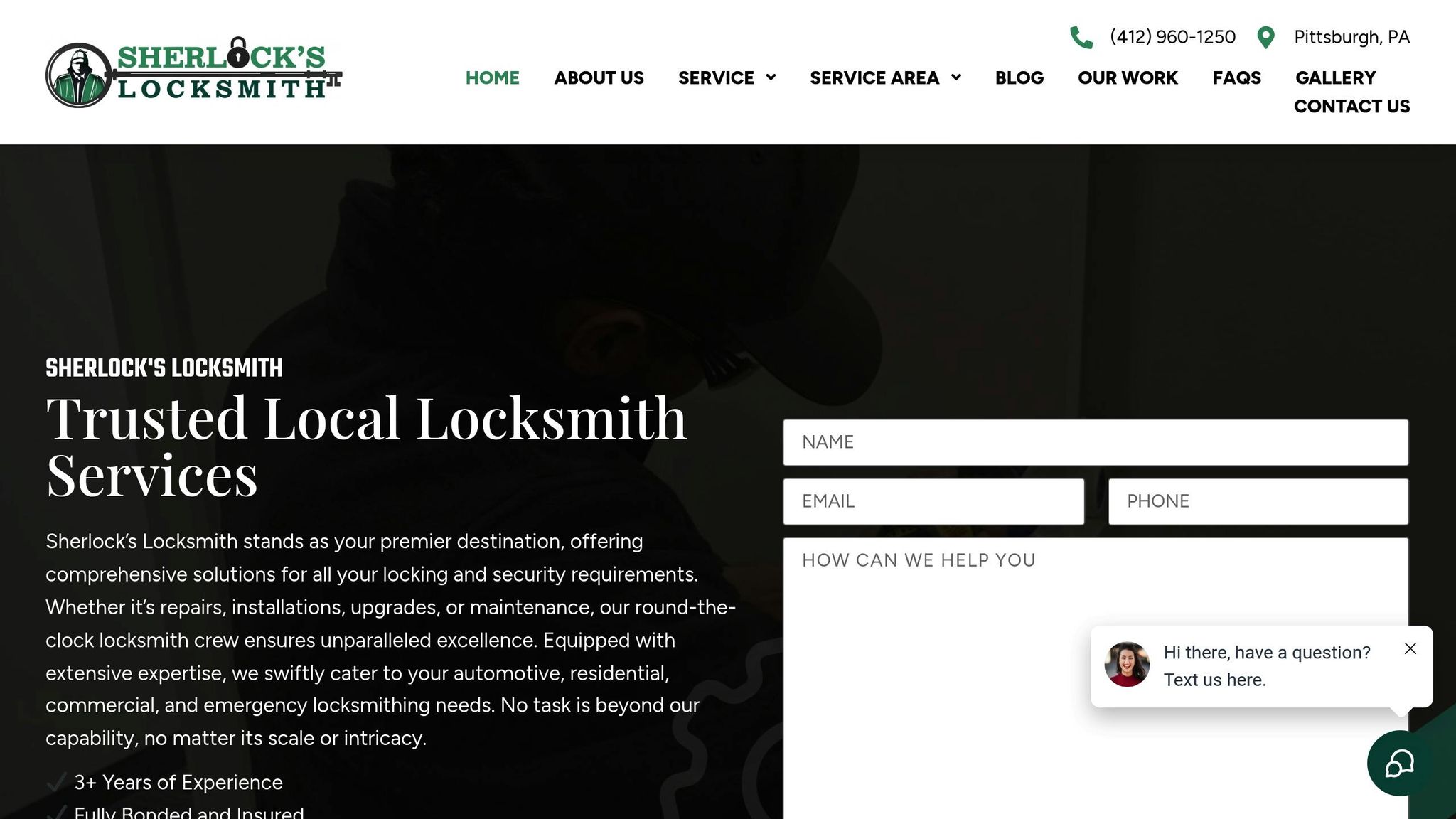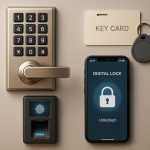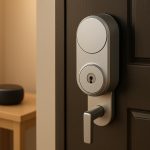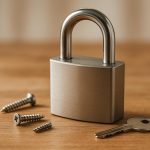Locksmiths program transponder keys by syncing the key’s microchip with a car’s immobilizer system. These keys use embedded microchips to communicate with the vehicle’s computer, ensuring only authorized keys can start the engine. Programming requires specialized tools, such as OBD programmers and EEPROM readers, and varies by car brand and model. Locksmiths may also need to cut the physical key to fit the ignition.
Key methods include:
- Programming New Keys: Registers a unique code with the car’s immobilizer.
- Cloning Keys: Copies data from an existing key, ideal for older systems but limited for modern vehicles.
- All Keys Lost (AKL): Resets the immobilizer and programs new keys when no working key is available.
Locksmiths also test and troubleshoot common issues like battery depletion, physical damage, or programming errors. For complex cases, tools like diagnostic scanners and chip readers are essential. Mobile locksmith services, such as those in Pittsburgh, provide on-site solutions, ensuring drivers regain access quickly and securely.
How Transponder Keys Work with Vehicle Systems
What Are Transponder Keys?
Transponder keys are a step up from traditional car keys, thanks to the microchip embedded in their plastic head. This chip holds a unique identification code that acts as a digital fingerprint for your vehicle. When the key gets close to the car’s antenna – usually placed around the ignition cylinder – the chip activates and sends its code to the car’s computer system. The term "transponder" comes from the chip’s ability to both transmit and respond to signals.
Here’s how it works: The chip stays inactive until it picks up a signal from the car. Once triggered, it sends its unique code back to the vehicle’s system. For the key to work, it has to clear two hurdles. First, the metal part of the key must physically fit and turn the ignition. Second, the microchip must transmit the exact code that matches the one stored in the car’s memory. This dual-layered security makes it much harder for thieves to bypass modern car systems.
This seamless communication is a critical part of the car’s immobilizer system, which we’ll dive into next.
Immobilizer Systems and Key Compatibility
The immobilizer system is your car’s electronic gatekeeper. Built into the engine control unit (ECU), it ensures that only a properly programmed transponder key can start the engine. Here’s what happens: When you turn the key, the immobilizer sends a signal to the transponder chip and waits for a response. If the chip returns the correct code, the system allows the engine to start. If not – or if no code is received at all – the immobilizer kicks in and disables key components like fuel injection, the ignition system, or even the starter motor.
Different car manufacturers use varying levels of security in their immobilizer systems. For example, Ford’s PATS (Passive Anti-Theft System) uses rolling codes that change every time the key is used, while Toyota’s engine immobilizer relies on fixed codes with extra layers of authentication. This means that programming a new key isn’t a one-size-fits-all process – it can vary between brands and even across different model years of the same brand.
When a locksmith programs a new transponder key, they’re essentially adding the key’s unique code to the immobilizer’s database. Most immobilizer systems can store multiple codes, typically for 2 to 8 keys, giving you the flexibility to have several working keys for your vehicle.
Now, let’s look at the different types of transponder keys and what sets them apart.
Types of Transponder Keys
Remote head keys combine the transponder chip and remote control features into one unit. The plastic head of the key houses both the chip for starting the engine and buttons for locking, unlocking, and sometimes activating emergency functions. These keys were widely used in cars from the early 2000s to the mid-2010s. Programming these keys often involves two steps: one for the transponder and another for the remote functions.
Proximity fobs are at the cutting edge of transponder technology. These “smart keys” don’t need to be inserted into the ignition. Instead, they communicate with the car when they’re within a certain range, allowing for push-button starts and automatic door unlocking as you approach. Because of their advanced encryption, programming proximity fobs usually requires specialized tools.
Flip keys are a compact and practical option. They feature a metal key blade that folds into the fob, much like a pocket knife. The plastic portion of the key houses the transponder chip and remote buttons, while the metal blade flips out when needed. This design not only saves space but also protects the key blade from wear and tear.
Separate transponder keys and remotes are still common in older vehicles and some budget-friendly models. In this setup, you have a standard-looking key with an embedded transponder chip for starting the engine, and a separate remote fob for locking and unlocking the doors. While this design isn’t as convenient, it can save you money on replacements since you can replace just the key or the remote as needed.
Each type of key uses different encryption methods, adding another layer of complexity to their programming and security.
Tools and Equipment for Programming
Key Programming Tools
Locksmiths rely on specialized tools to program transponder keys effectively. One of the most commonly used devices is the OBD programmer, which connects directly to the vehicle’s diagnostic port. This tool updates key codes and supports remote functions across a variety of car brands.
When OBD programming isn’t successful, locksmiths may need to access the vehicle’s EEPROM directly. In situations where all keys are lost, EEPROM readers and writers become essential. These tools allow locksmiths to access the immobilizer module or ECU memory, update key information, and write new data. While this method can be more time-intensive, it’s often the only option when no working keys are available.
Key cutting machines play a critical role in shaping transponder key blanks with precision. These machines use computerized systems and databases of key profiles to ensure the key’s physical fit matches the ignition cylinder. It’s important to note that even a perfectly programmed transponder chip won’t work if the physical key can’t properly engage the ignition.
For simpler tasks, transponder cloning devices can copy data from an existing key onto a new chip. However, these devices have limitations – they can’t handle vehicles equipped with rolling codes or advanced encryption technologies.
Transponder Chips and Compatibility
Understanding the specifications of transponder chips is just as important as having the right tools. Different chips require specific programming methods. For instance, some chips – commonly found in European vehicles – use 128-bit encryption, demanding advanced programming procedures. Others incorporate anti-cloning measures, which may require dealer-level tools or highly specialized equipment.
Some manufacturers take security a step further by using proprietary transponder systems that feature rolling code technologies. These systems change the key’s code with every use, making duplication nearly impossible. Additionally, certain chips used across various brands include extra layers of security to prevent unauthorized copying. Complicating matters further, chip types can vary even within the same vehicle model, based on factors like production year, trim level, or market region. To navigate this complexity, locksmiths maintain detailed databases and reference materials to select the correct chip for each specific vehicle.
Supporting Equipment for Safe Programming
Successful key programming requires more than just the main tools – it also depends on the right supporting equipment. For instance, maintaining a stable 12-volt power supply is crucial. Battery maintainers keep the vehicle’s electrical system active during programming, preventing disruptions caused by weak or depleted batteries. Any interruption during this process could damage the immobilizer system.
Electrostatic discharge (ESD) protection is another key consideration. Sensitive electronics, like transponder chips, are vulnerable to static damage. To prevent this, locksmiths use anti-static wrist straps, ESD-safe work mats, and grounded workstations, ensuring delicate components remain safe.
Diagnostic scan tools are indispensable for verifying the status of the immobilizer system and ensuring the newly programmed key communicates properly with the vehicle. In cases involving EEPROM chips, additional tools like precision soldering equipment are needed. This includes soldering irons, desoldering stations, chip pullers, and magnification tools, all of which help safely remove and reinstall chips without damaging the circuit board. Sometimes, specialized chip reading adapters are used to avoid physically removing the chip altogether.
Lastly, the environment plays a significant role in programming success. Extreme temperatures – whether too hot or too cold – can impact both the equipment and the vehicle’s electronics. Many locksmiths work in climate-controlled environments or bring portable climate control solutions for mobile services to ensure consistent results.
Step-by-Step Programming Process
Preparation and Vehicle Identification
Before starting, locksmiths confirm vehicle ownership by reviewing the necessary documents, ensuring security for both themselves and the vehicle owner. They then examine the vehicle’s VIN – a unique 17-character code that provides details like the make, model, year, engine type, and security system. This information helps them decide on the right programming approach. Additionally, they check the vehicle’s immobilizer system and locate the diagnostic port, which is essential for OBD-based programming. Once ownership and vehicle details are verified, the locksmith selects the appropriate programming method.
Programming with an Existing Key
With the vehicle details confirmed, locksmiths begin programming in line with the immobilizer system’s protocols. If the vehicle supports it, they use the built-in programming sequence with an existing key. If not, an OBD programmer is connected to the diagnostic port. This device communicates directly with the vehicle’s immobilizer system, reading the data from the existing key and adding information for the new key. During this process, the locksmith inserts the new transponder key and uses the programming tool to sync the chip with the immobilizer system. Once the programming is complete, both the original and new keys are tested to ensure they work seamlessly.
All Keys Lost (AKL) Procedure
When no key is available, locksmiths follow the All Keys Lost (AKL) procedure. This involves clearing all previously programmed keys to maintain security. For newer vehicles – like GM models from 2017 onward – two keys must be programmed together to prevent the engine from locking after about five starts.
In specific cases, such as with certain Ford and Lincoln models, locksmiths may use specialized alarm bypass cables to complete the process. Customers are typically charged for both keys during AKL services, with an additional fee of $30–40 for the second key. Once programming is finished, both keys are thoroughly tested to confirm they function correctly.
How to Program a Transponder Key
sbb-itb-643e28e
Cloning vs. Programming: Key Differences
When it comes to creating a working key for a vehicle, locksmiths rely on two main methods: cloning and programming. Each approach has its own techniques, advantages, and limitations, depending on the vehicle’s system.
Cloning Transponder Keys
Cloning involves making an exact copy of an existing transponder key. A locksmith uses a cloning device to read the chip information from the original key and transfers it onto a blank chip. This process bypasses the vehicle’s immobilizer system entirely.
This method is ideal when there’s a fully functional original key available and a quick duplicate is needed. Since the cloned key mirrors the original’s data, the vehicle’s immobilizer typically accepts it without any additional steps. Cloning is especially practical for older vehicles with simpler immobilizer systems.
However, cloning has its drawbacks. Many modern vehicles use encrypted or rolling-code chips, which cannot be cloned. Additionally, any issues or problems with the original key – such as wear or malfunction – will also be duplicated in the cloned key.
Programming New Keys
Programming, on the other hand, involves directly registering a new transponder key with the vehicle’s immobilizer system. Locksmiths use specialized tools to communicate with the car’s computer. This process often requires an existing programmed key or access to the vehicle’s programming mode.
Programming offers distinct benefits. By generating unique data for each new key, it enhances security. It’s also compatible with a wide range of modern vehicles, including those with advanced encryption and rolling-code systems. Another advantage is that multiple keys can often be registered during a single programming session, providing added convenience and reliability.
That said, programming typically takes more time and requires sophisticated equipment compared to cloning. Despite the added effort, its superior security and broader compatibility make it the go-to method for most modern vehicles.
Comparison of Methods
Here’s a side-by-side look at how cloning and programming stack up:
| Aspect | Cloning | Programming |
|---|---|---|
| Processing Time | Faster, fewer steps | Slower due to additional procedures |
| Original Key Needed | Requires a fully functional key | Needs an existing key or alternative for lost keys |
| Vehicle Compatibility | Best for older systems | Works with most modern vehicles |
| Security | Copies existing data | Creates unique data for better security |
| Equipment Complexity | Simpler, lower-cost tools | Advanced, higher-cost tools required |
| Reliability | Can replicate original key issues | More reliable when executed correctly |
For modern vehicles, locksmiths often favor programming due to its enhanced security and compatibility. However, cloning remains a practical option in specific scenarios, such as older vehicles or when a quick duplicate is needed in an emergency.
These differences also explain why service times and costs can vary. While programming may take longer and require more expensive tools, it generally provides a more secure and dependable solution for today’s automotive systems.
Troubleshooting and Validation
Even the most experienced locksmiths can encounter obstacles when programming transponder keys. Understanding these common issues is essential for a smooth process and successful outcomes.
Common Programming Problems
Battery Depletion
Transponder keys rely on small batteries, which can lose their charge over time. A depleted battery may weaken the key’s signal or prevent programming altogether. To avoid this, locksmiths often check the battery’s voltage before starting the programming process and replace it if needed.
Physical Damage
Everyday wear and tear, accidental drops, exposure to moisture, or using excessive force can harm the internal circuitry of a transponder key. Such damage can interfere with the key’s ability to transmit signals properly.
Programming Errors and Desynchronization
Mistakes during coding, incomplete synchronization, or interruptions during the process can disrupt communication between the key and the vehicle’s immobilizer. These issues can also occur if the key fob’s battery is replaced or dies, or if the vehicle’s computer system undergoes a reset.
Professional Locksmith Services in Pittsburgh, PA
When it comes to transponder key programming, Pittsburgh residents can count on local locksmiths to deliver expert, on-site solutions. These professionals handle the intricate programming process with precision, ensuring everything works seamlessly right where you need it.
Sherlock’s Locksmith Expertise

Sherlock’s Locksmith stands out with certified technicians who come equipped with cutting-edge programming tools, ready to assist you anywhere in Pittsburgh, PA. Their automotive locksmith services cover transponder key programming for virtually all vehicle makes and models, ensuring smooth integration with modern immobilizer systems.
Using advanced programming techniques, Sherlock’s Locksmith tackles both routine and complex key issues. Their tools are designed to handle fixed, rolling, and encrypted transponder systems. Beyond programming, they also offer key duplication, ignition repair, and lock repair for vehicles. Their skilled technicians can diagnose and fix common problems like battery-related malfunctions, physical damage to keys, or programming errors that disrupt the connection between your key and vehicle.
24/7 Mobile Locksmith Services
Sherlock’s Locksmith takes convenience to the next level with their 24/7 mobile locksmith services. Whether you’re dealing with a transponder key issue at home, work, or stuck somewhere in Pittsburgh, their team is always ready to help. This around-the-clock service ensures you’re never left stranded.
Their emergency support includes immediate lockout assistance and on-site repairs. If your transponder key breaks off in the ignition or a door lock, they also provide broken key extraction services.
Before starting any programming, their technicians perform on-site vehicle identification and compatibility testing to ensure they have the right transponder chips and protocols for your specific car. This preparation minimizes delays and boosts the chances of a successful fix.
With Sherlock’s Locksmith, Pittsburgh residents enjoy fast, reliable solutions for transponder key programming, no matter the time or place. Their mobile services are designed to get you back on the road as quickly as possible.
Conclusion
Programming a transponder key is not as simple as cutting a traditional key. It requires precision, specialized tools, and a deep understanding of how immobilizer systems work. This intricate process highlights the importance of relying on professional expertise.
Certified locksmiths use advanced tools and undergo extensive training to tackle everything from straightforward key programming to more complex scenarios, like when all keys are lost. They know the key differences between cloning and programming, ensuring your new transponder key works seamlessly with your vehicle’s security system. Before completing the job, they rigorously test the key to confirm it communicates correctly with the immobilizer and functions reliably, safeguarding against potential issues down the road.
For drivers in Pittsburgh, professional locksmiths offer more than just technical skills – they provide peace of mind. With mobile locksmith services, you can address transponder key problems without disrupting your day. Whether it’s a lost key, a malfunctioning transponder, or a programming error, these experts have the tools and knowledge to quickly restore your vehicle’s security and get you back on the road.
Modern transponder systems are complex, and attempting a DIY fix can lead to programming errors, damaged keys, or even compromised security. Trusting certified professionals ensures your vehicle remains secure and functional for the long haul.
FAQs
What should I do if my transponder key suddenly stops working?
If your transponder key suddenly isn’t working, the first thing to check is the battery. A drained or weak battery is often the culprit. Then, take a close look at the key itself – cracks, wear, or other visible damage could be interfering with its performance. In some cases, the key may need to be reprogrammed if its programming has been disrupted.
If these quick fixes don’t solve the problem, it’s time to call in a professional locksmith. They can pinpoint the issue, handle reprogramming, or even replace the key if necessary. For dependable help, reach out to a trusted locksmith service in your area.
How do locksmiths make sure a new transponder key works with my car’s security system?
When locksmiths create a new transponder key for your car, they ensure it’s properly programmed to work with your vehicle’s immobilizer system. This involves syncing the key’s microchip with your car’s ECU (Engine Control Unit) using specialized tools and software.
By matching the key’s unique electronic code to your car, they make sure that only the programmed key can start the engine. This adds an extra layer of security to prevent unauthorized use. Skilled locksmiths are equipped to handle this process smoothly, ensuring your new key functions flawlessly with your vehicle.
What’s the difference between cloning and programming a transponder key, and which is safer?
Cloning a transponder key means copying the electronic code from your current key onto a blank chip. This creates a duplicate that can start your vehicle. However, cloning doesn’t interact with or update your car’s security system, which makes it less secure in the long run.
Programming a transponder key, on the other hand, involves syncing the key directly with your car’s immobilizer system. This process pairs the key uniquely to your vehicle, offering better protection and minimizing the chances of unauthorized duplication.
In most cases, programming your key is the safer and more dependable choice for securing your car.









